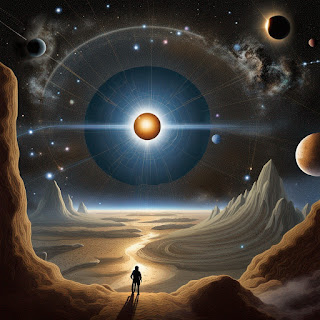Introduce
The universe, with its boundless immensity and celestial wonders, never ceases to amaze mankind. Among the most intriguing mysteries it holds is the question of the greatest thing in the universe. Throughout the history of astronomy and cosmology, scientists have embarked on a profound journey to discover massive entities that eclipse our understanding. In this article, we embark on an inspiring expedition into the boundless world of space to discover the grandeur of the greatest things the universe has to offer.
Star Giant: Unparalleled Glowing Orb
Stars, the basic building blocks of the universe, come in an amazing variety of sizes. Although our Sun is a relatively medium-sized star, there are several stars that outstrip it in magnitude. Enter red supergiants, massive stars whose radii are hundreds, even thousands of times larger than the Sun. Betelgeuse, one of the most famous red supergiants, would engulf the planets inside our solar system if placed at its center. These massive stars, although rare, play an essential role in the life cycle of the universe, enriching the universe with elements formed in their cores by nuclear fusion.
Galactic Giants: Huge Star Collection
Zooming in on individual stars, we encounter galaxies, the magnificent cities of the universe. Some galaxies are notable for their enormous size, containing billions to trillions of stars. Among these massive galaxies are elliptical galaxies, which can span tens of thousands of light years. These massive structures, which are elliptical in shape, are mainly composed of older stars and are evidence for the evolution of galaxies in cosmic time. Spiral galaxies, like the giant Andromeda Galaxy, are among the largest in the universe, home to countless stars and spiral arms spanning tens of thousands of light-years.
Cosmic thread: Theme of the universe
The universe shows a different large dimension than the cosmic web of filaments, a complex web of dark matter and galaxies. These vast structures span billions of light-years, connecting galaxies in a cosmic tapestry. Cosmic filaments serve as invisible scaffolding on which galaxies and galaxy clusters are arranged. These invisible strings, though invisible to the naked eye, are integral to the formation and development of cosmic structures.
Quasar: Bright beacon of the abyss
As we probe deeper into the universe, we encounter quasars, intensely luminous objects powered by supermassive black holes at the centers of distant galaxies. These power plants emit large amounts of light and radiation, obscuring the entire galaxy. The brilliant luminosity of quasars, thought to be the result of matter spiraling into supermassive black holes, makes them some of the most distant and brightest phenomena in the universe.
Clusters and Superclusters: Cities of Galaxies
On an even larger scale, we discover galaxy clusters and superclusters, large collections of galaxies held together by gravity. These massive structures span hundreds of millions of light-years and are the largest known gravitational objects. Superclusters, such as the Shapley Supercluster, exhibit a spectacular range of the cosmological structure of the universe, revealing its vast interconnectedness.
Conclusion
The greatest things in the universe include a series of awe-inspiring cosmic entities that push our imagination to its limits. From massive stars to sprawling galaxies, and from intricate filaments to luminous quasars, the grandeur of the universe is testimony to the wonders of natural phenomena. As we continue to explore and study the universe, we remember our humble place in the vast expanse of space, forever inspired by wonders beyond our reach.
In our quest to understand the greatest thing in the universe, we remain determined to unlock the secrets of the universe, enrich our knowledge of the universe we call home, and uncover more mysteries that await us in the uncharted regions of space.







